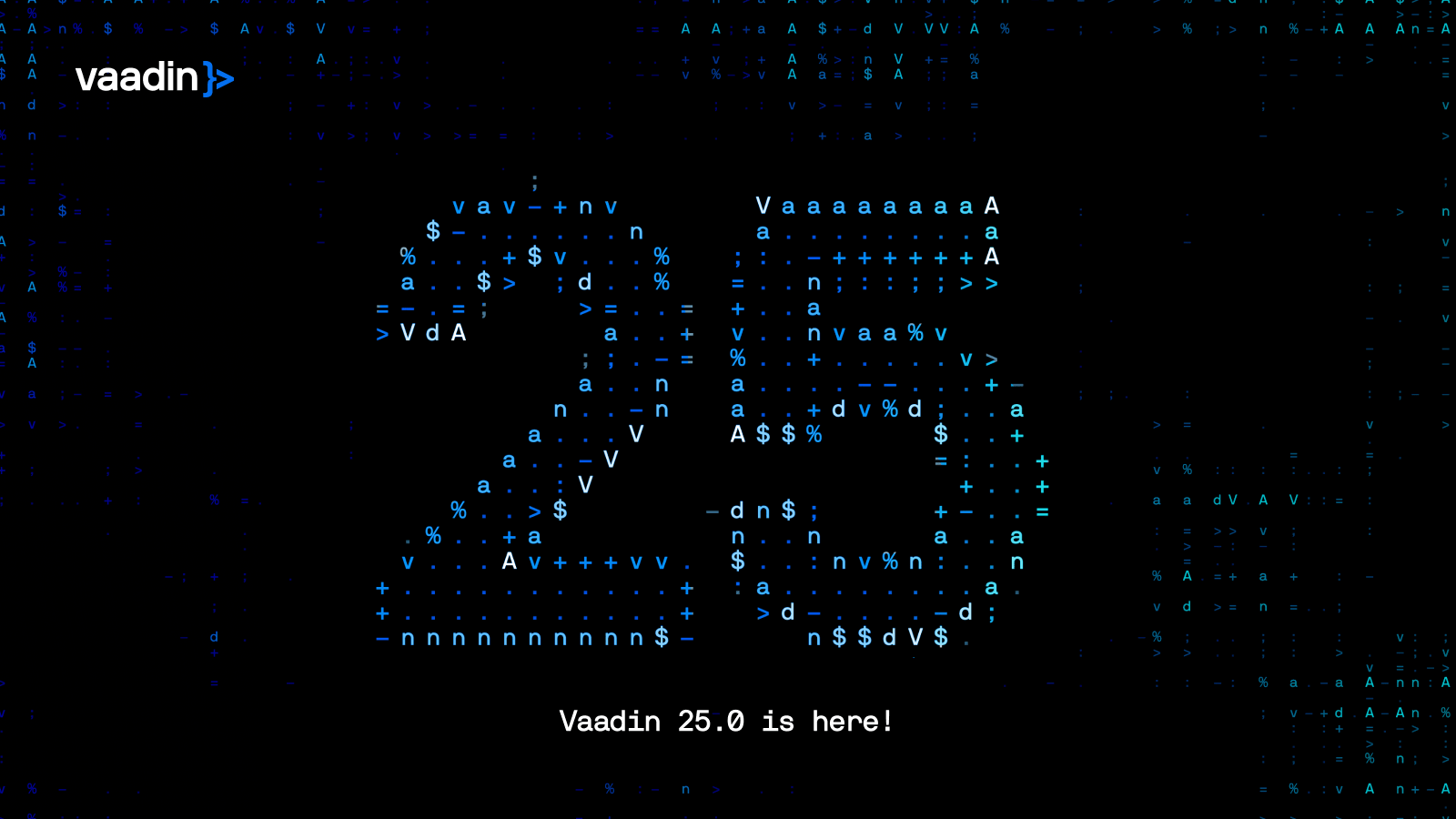Vaadin Blog
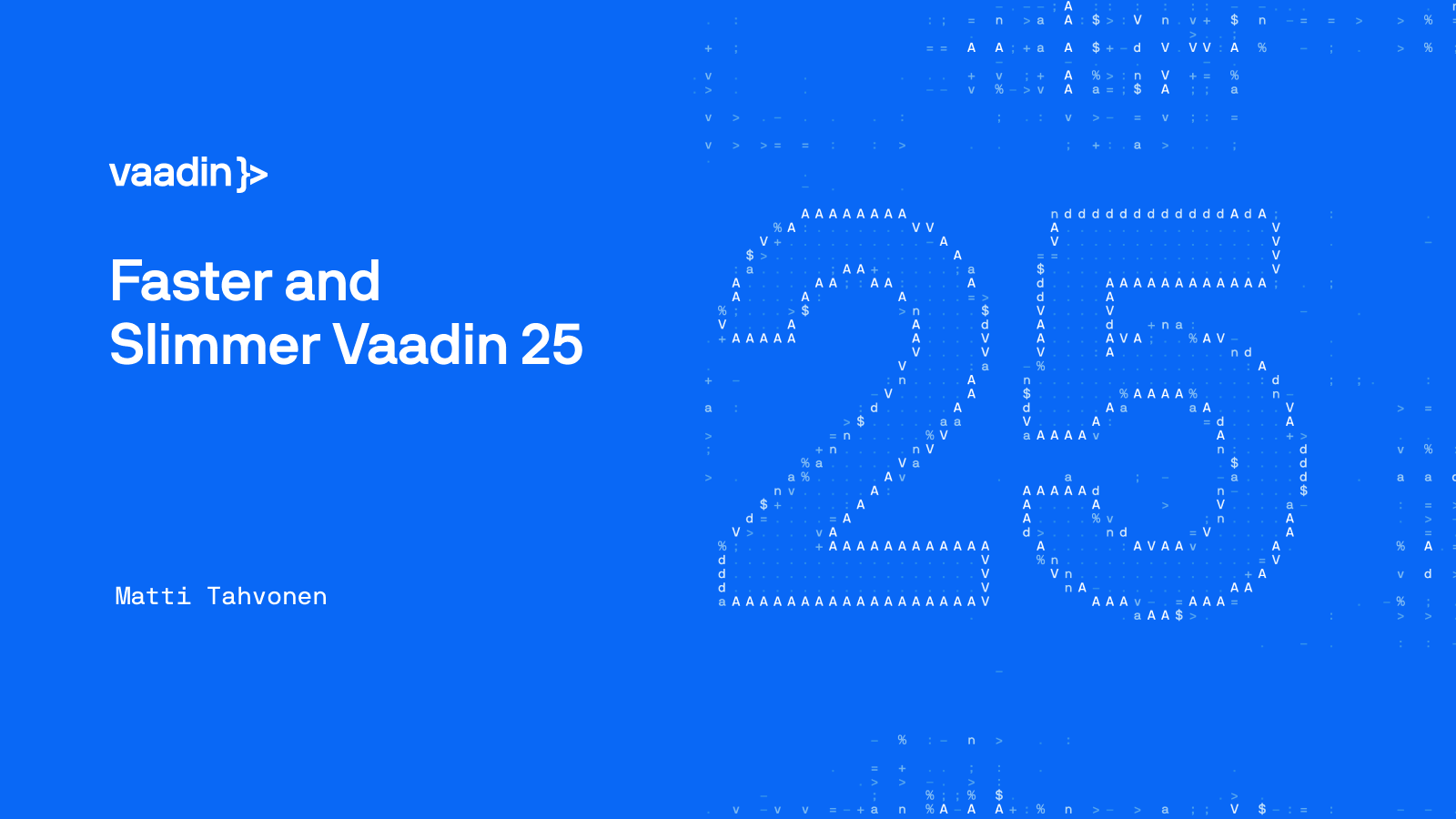
Faster and Slimmer Vaadin 25
It’s no secret: the soon-to-be-released Vaadin 25 doesn’t ship a huge amount of new features. We’ll return to that in upcoming minor releases. But alongside achieving compatibility with things like Spring Boot 4 and Jakarta EE 11, we’ve put Vaadin 25 on a diet. It’s smaller, more modular, and ...
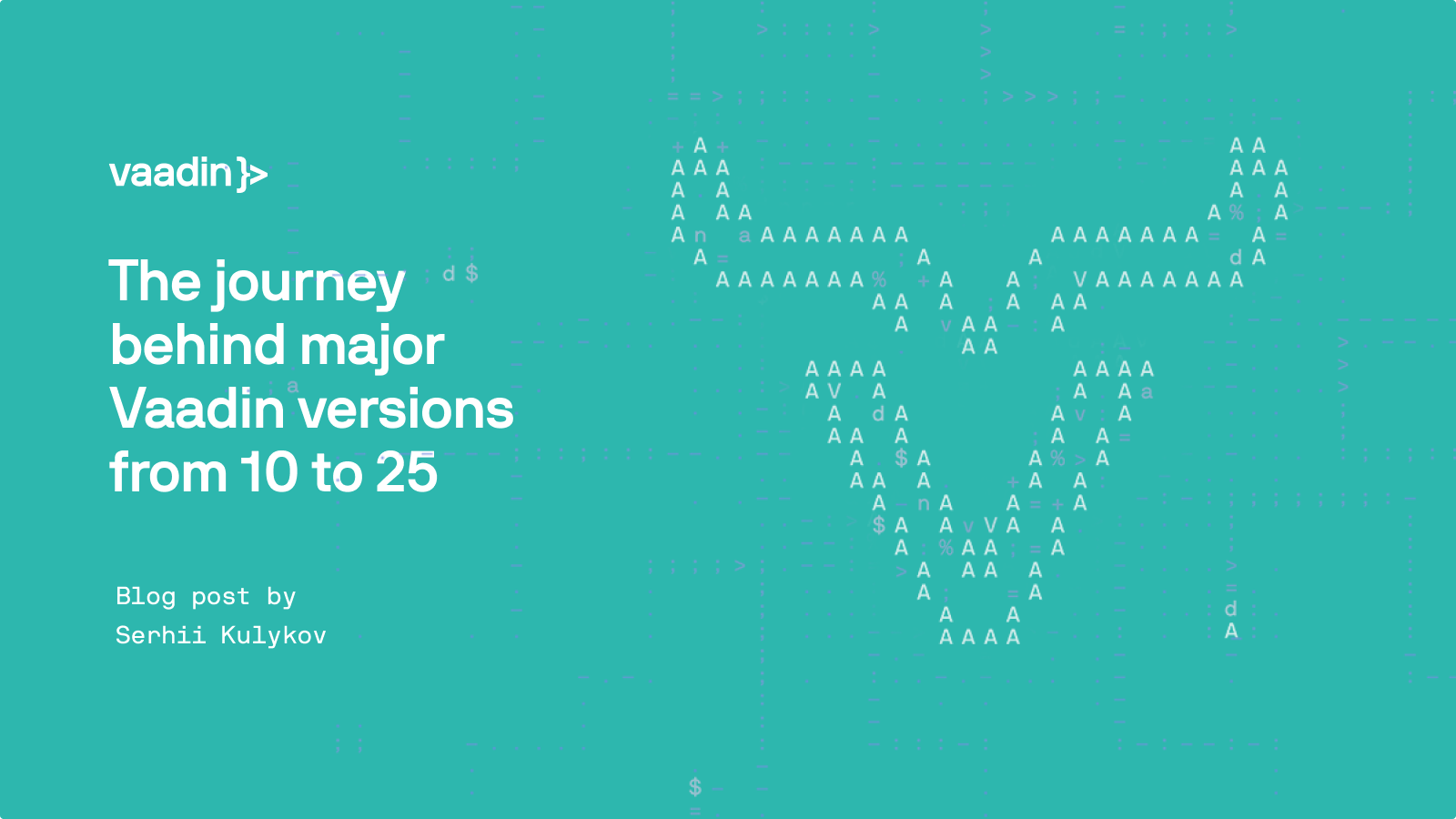
What it takes to build a set of Vaadin components
This post is my personal reflection on eight years of building and refining Vaadin components across major versions, and the lessons learned along the way. The journey behind major versions from 10 to 25 Working on building a Java framework is quite an interesting challenge… And even more so if you ...
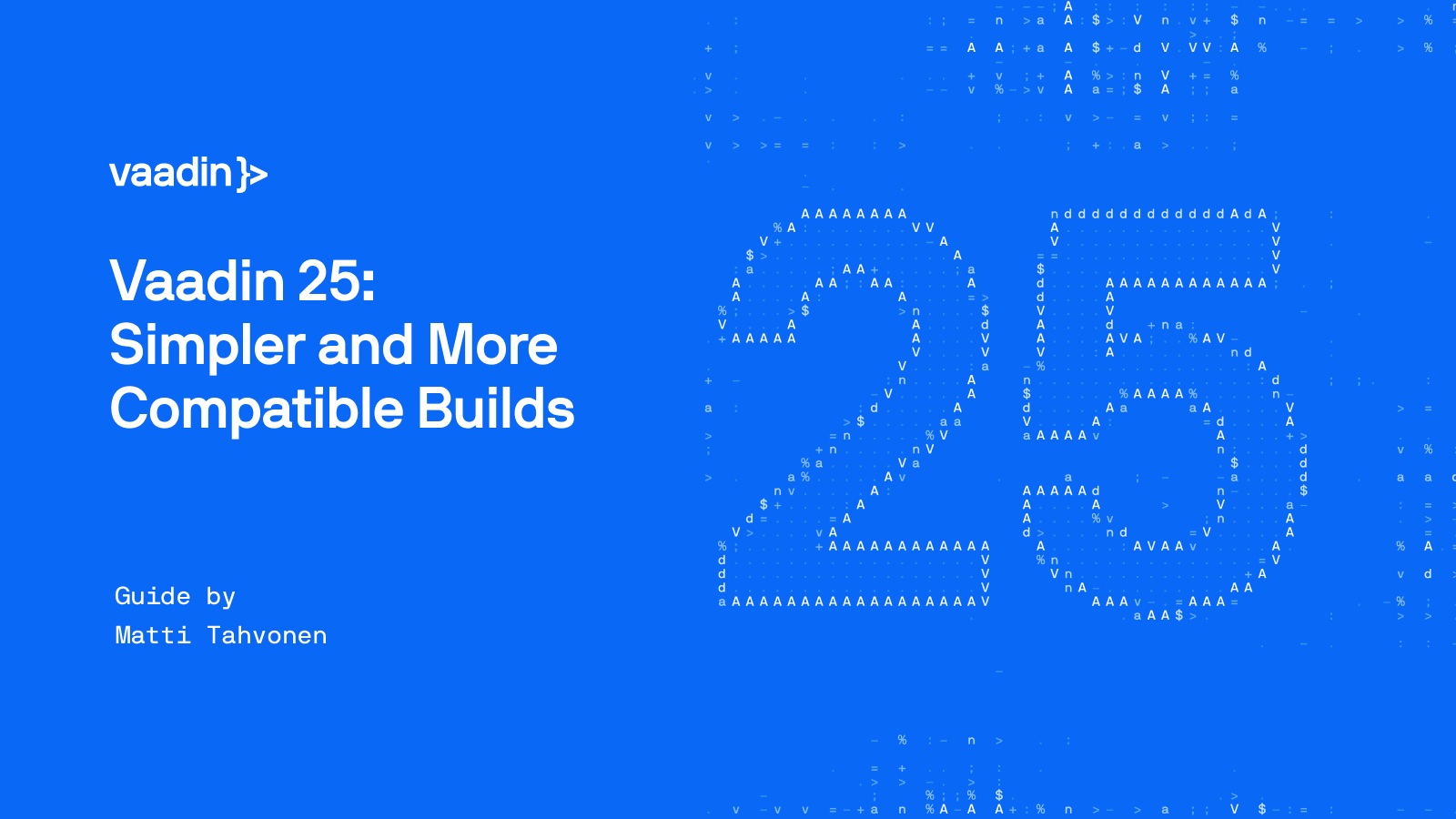
Vaadin 25 – Simpler and More Compatible Builds
One of the biggest changes existing Vaadin users will notice in version 25 is how much simpler the build setup has become. In Maven-based projects especially, build files now contain far fewer Vaadin-specific configurations. They’re cleaner, easier to read, and less intimidating for newcomers. At ...
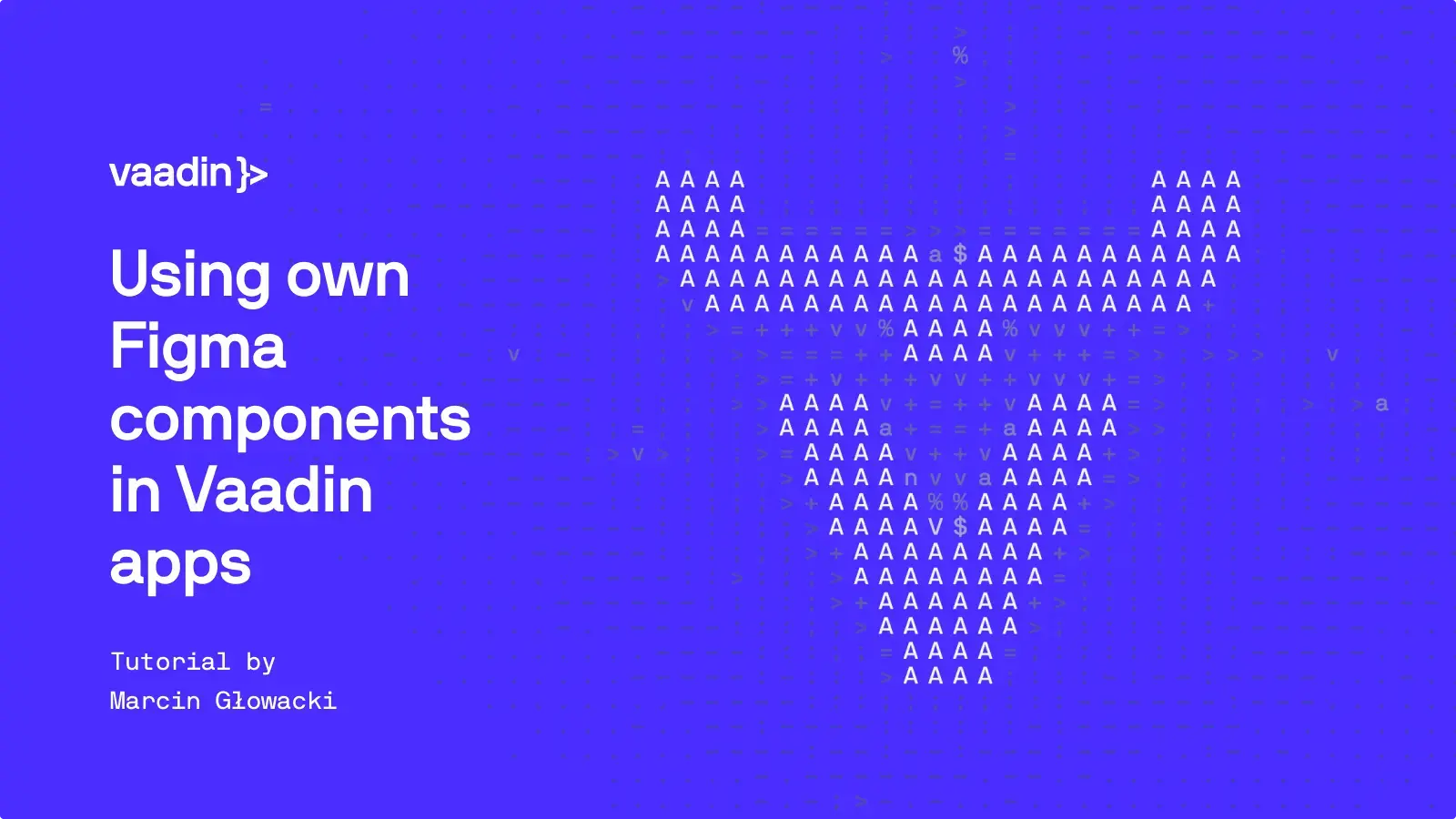
How to use own Figma components in Vaadin applications
In this guide, you’ll learn how to copy components from Figma and paste them into Vaadin as Java or React code using Vaadin Copilot’s Figma Importer API. This article is based on: Demo project Figma component and instance example Before we begin To have the best experience while working with ...

Upgrading your Add-on to Vaadin 25: A Developer's Guide
Vaadin 25 release is only a couple of weeks away. A traditional issue hindering testing and usage of new major Vaadin versions is add-on compatibility. To help create a quality release, testing and upgrading add-ons is one of the most urgent and helpful ways to contribute to our open-source ...
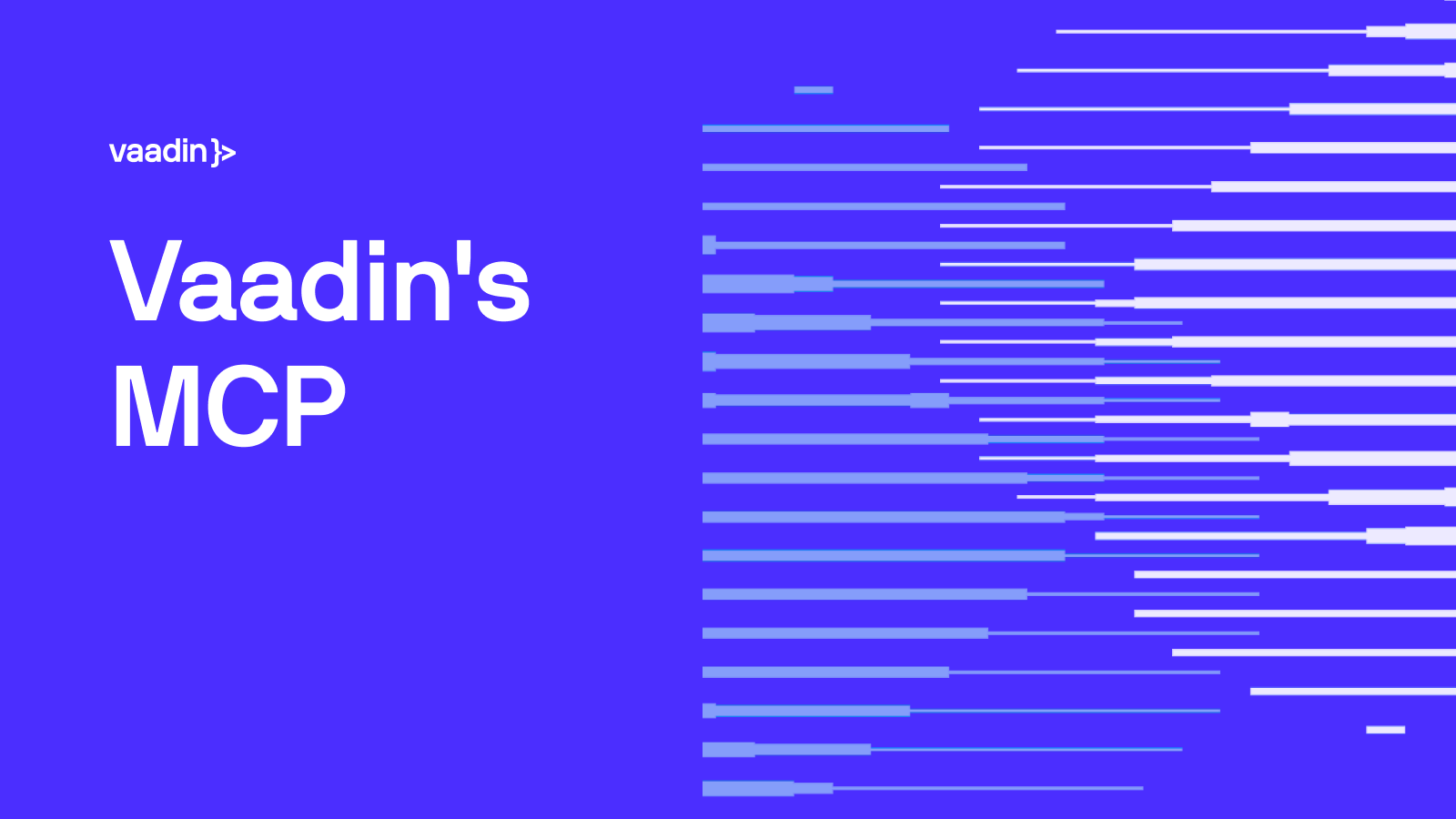
Introducing the official Vaadin MCP server
We just released our official Vaadin MCP server, a standard Model Context Protocol (MCP) endpoint that lets your AI coding tools query the latest Vaadin docs right from your editor. Plug it into any MCP-compatible client and your AI assistant can pull current component APIs, theming guidance, and ...

Merging Hilla into Flow: practical and strategic changes
We recently announced merging the Hilla framework into the Flow framework. This follow-up gives more detail on what will change in practice for current Vaadin users and where we're heading in the future. Nothing changes for existing applications Support for React remains. We will continue to ...

Merging Hilla into Flow: Embracing the Java core
For more than 25 years, Vaadin has been about one thing: making Java developers more productive while delivering outstanding user experiences. EDIT: Practical and strategic changes highlighted in detail here. Throughout this journey, we’ve evolved our client-side implementation from custom HTML ...

3 Ways to Remove Browser Chrome and Go Fullscreen in Java Web Apps
Imagine your Java web application running without browser toolbars or navigation bars—just pure, focused content filling the entire screen. This guide reveals three proven methods to eliminate browser chrome in Vaadin applications, from zero-code solutions to Progressive Web Apps and the Fullscreen ...
